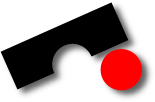
Lightweight Defect Localization for Java
Valentin Dallmeier, Christian Lindig, and Andreas Zeller
Universität des Saarlandes – Informatik
Informatik Campus des Saarlandes
Campus E9 1 (CISPA)
66123 Saarbrücken
E-mail: zeller @ cs.uni-saarland.de
Telefon: +49 681 302-70970



In the AspectJ ranking, the faulty class is at position 10 out of 542 executed classes—meaning that the programmer, starting at the top, has to examine only 1.8% of the executed classes or 3.3% of the executed code (0.3% of all classes or 0.8% of the entire code) in order to find the defect. (In comparison, comparing coverage of passing and failing run yields no difference in the faulty class, making coverage difference worse than a random guess.) (How Call Sequences Indicate Defects)
Get the paper in PDF format (22 pages, 1MB).
Abstract
A common method to localize defects is to compare the coverage of passing and failing program runs: A method executed only in failing runs, for instance, is likely to point to the defect. Some failures, though, come to be only through a specific sequence of method calls, such as multiple deallocation of the same resource. Such sequences can be collected from arbitrary Java programs at low cost; comparing object-specific sequences predicts defects better than simply comparing coverage. In a controlled experiment, our technique pinpointed the defective class in 36% of all test runs.Contents
- Introduction
- How Call Sequences Indicate Defects
- Summarizing Call Sequences
- From Traces to Call Sequences
- From Objects to Classes
- Incoming vs. Outgoing Calls
- Collecting Traces
- Overhead
- Relating Call Anomalies to Failures
- A Case Study
- Object of Study
- Experimental Setup
- Threats to Validity
- Discussion of Results
- Related Work
- Conclusion and Consequences
- References
Download
- Paper in PDF format (22 pages, 1MB)
See Also...
Impressum ● Datenschutzerklärung
<webmaster@st.cs.uni-saarland.de> · http://www.st.cs.uni-saarland.de//papers/dlz2004/ · Stand: 2018-04-05 13:41